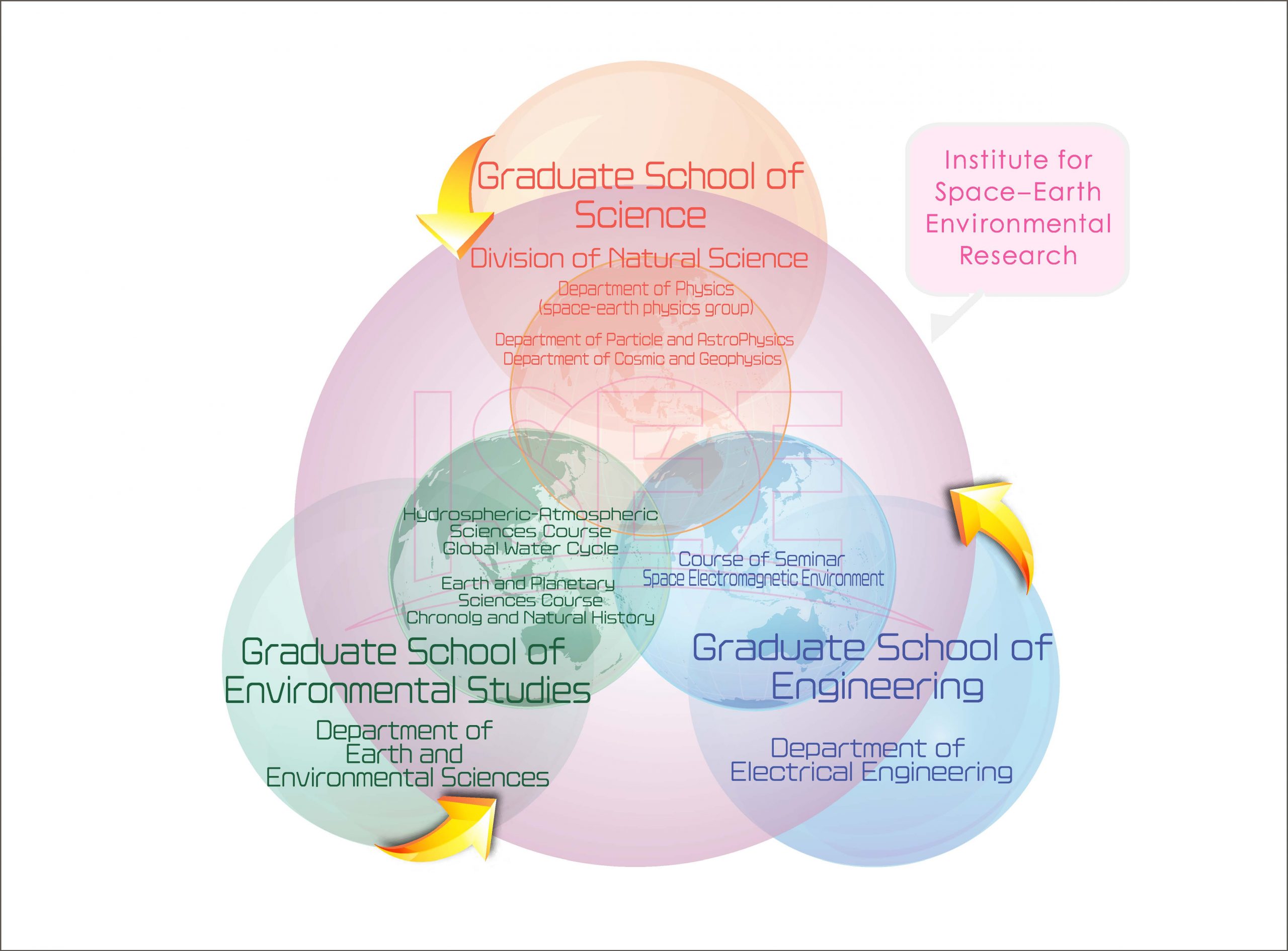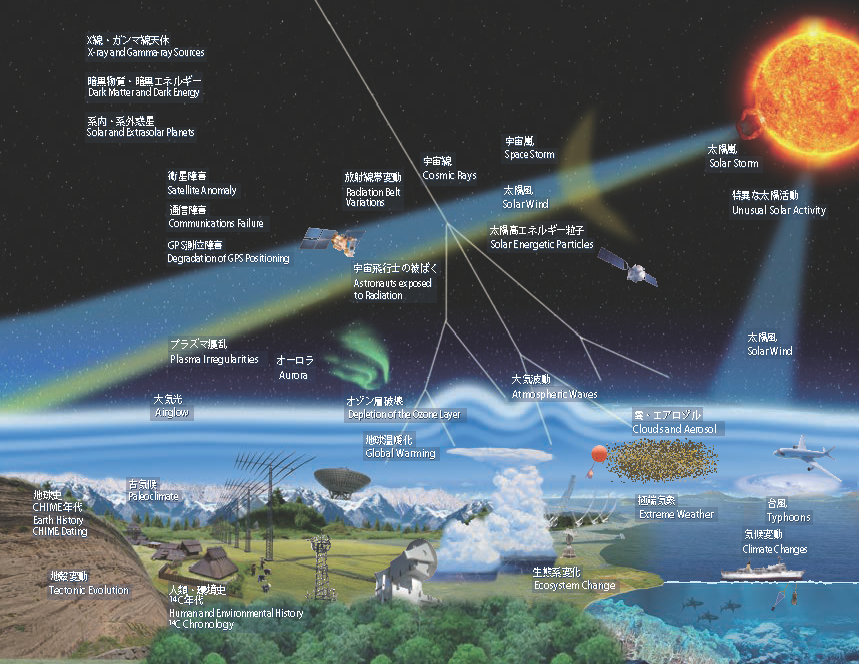Education
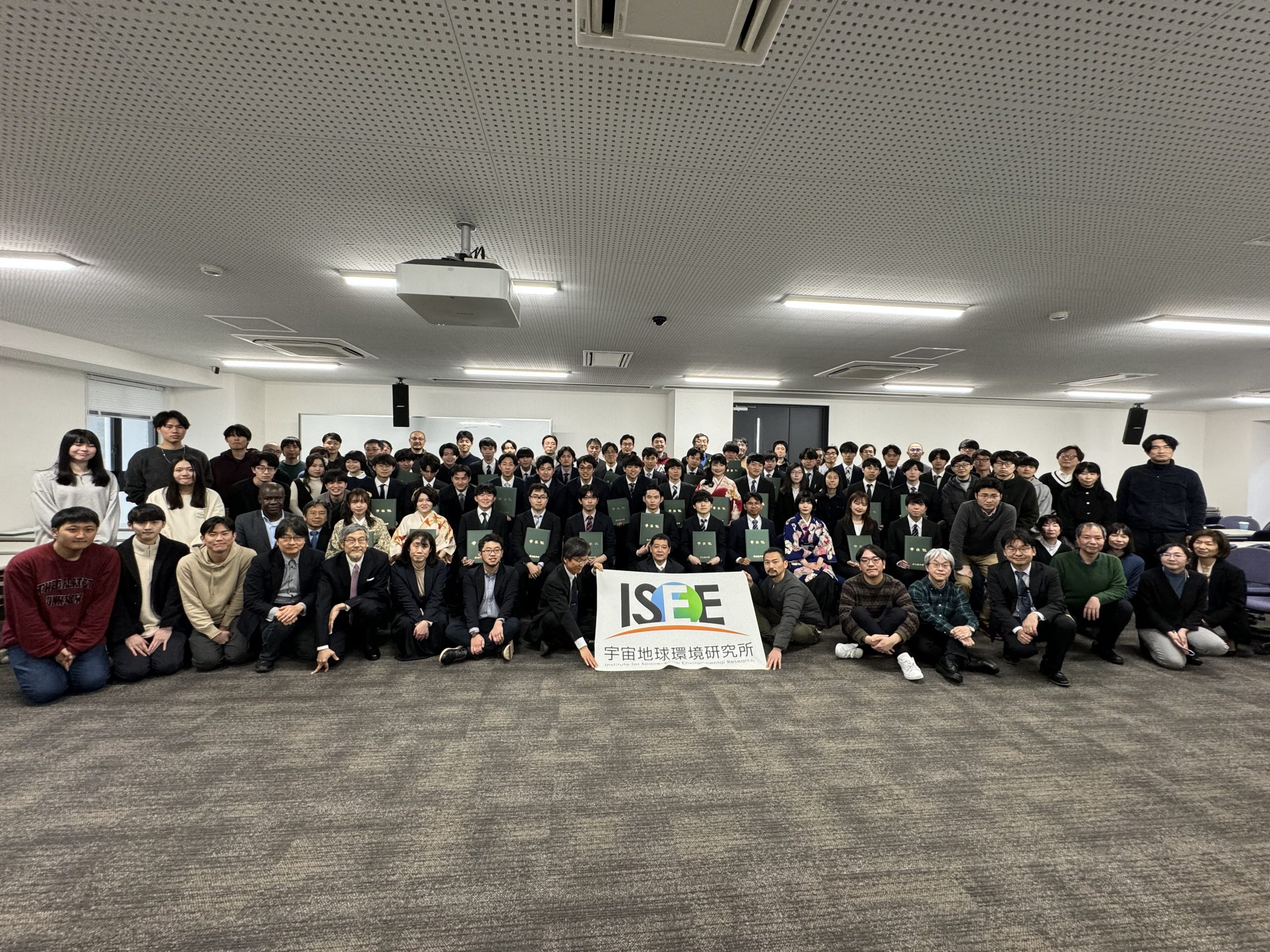
Education in ISEE
Graduate schools, Departments, and Fields of study in ISEE
ISEE Research Departments
Graduate schools, Departments, and Laboratories / Research goups / Research divisions
Course Tree
Graduate Admissions
Student Life
Financial Support for Students / Scholarship
Overseas Travel Support
ISEE provides overseas travel support in the following categories: 13) and 16) out of the 17 categories of the ISEE Joint Usage/Research Program.
For details, please Click here.
- 13) International travel support for field and laboratory experiments by students and early-career scientists
- 16) International travel support for students (international presentation / institutional stay)
These programs provide graduate students with opportunities to gain experience through international exchange and participation in joint research. Category 13) is offered once a year, and category 16) is offered twice a year.
Message from Senior Students
楊 天量 2nd grade of Master’s Course in AM-lab, Division of Natural Science, Graduate School of Science
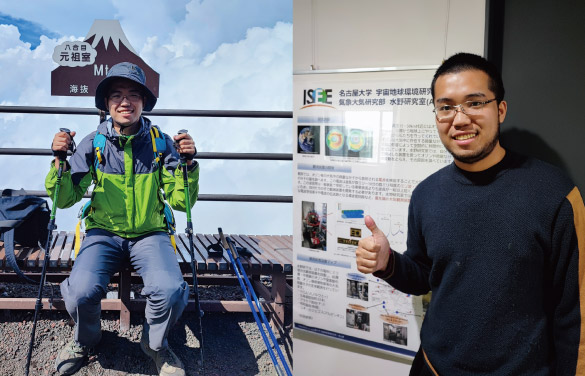
李 梓萌 3rd grade of Doctoral’s Course in Department of Earth and Environmental Sciences, Graduate School of Environmental Studies (2022)
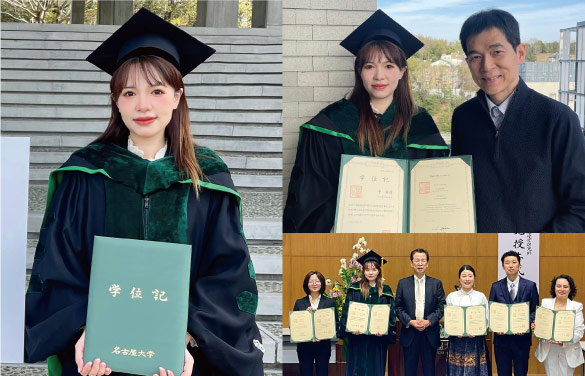
Jie Liu 2nd grade of Master’s Course in Department of Electrical Engineering, Graduate School of Engineering (2021)

Staff List
Graduate School of Science
Division of Natural Science, Department of Physics (space-earth physics group)
| Atmospheric and Environmental Science (AM) | |||
|---|---|---|---|
| Atmospheric Science, Radio Astronomy | MIZUNO Akira | Professor | Division for Meteorological and Atmospheric Research |
| Middle Atmospheric Physics, Chemistry | NAGAHAMA Tomoo | Associate Professor | Division for Meteorological and Atmospheric Research |
| Space Science – Experiment (SSE) | |||
| Space Physics, Planetary Exploration, Aurora Physics | HIRAHARA Masafumi | Professor | Division for Ionospheric and Magnetospheric Research |
| Upper Atmospheric Physics | NOZAWA Satonori | Associate Professor | Division for Ionospheric and Magnetospheric Research |
| Upper Atmospheric Observation Physics, Space Physics | OYAMA Shin-ichiro | Lecturer | Division for Ionospheric and Magnetospheric Research |
| Solar and Space Physics-Theory (SST) | |||
| Solar/Stellar Physics, Numerical Simulation | HOTTA Hideyuki | Professor | Division for Integrated Studies |
| Solar Physics | MASUDA Satoshi | Associate Professor | Division for Integrated Studies |
| Planetary plasma physics | HARADA Yuki | Associate Professor | Division for Integrated Studies |
| Aurora Science, Space Plasma Physics | IEDA Akimasa | Assistant Professor | Division for Integrated Studies |
| Cosmic-Ray Physics (CR) | |||
| Cosmic-Ray Physics, Gamma-Ray Astrophysics, Dark Matter Research | TAJIMA Hiroyasu | Professor | Division for Cosmic-Ray Research |
| Dark Matter | YAMASHITA Masaki | Professor | Division for Cosmic-Ray Research |
| Cosmic-Ray Physics | MIYAKE Fusa | Associate Professor | Office for the Promotion of Transdisciplinary Network |
| X/gamma-ray astronomy, transient astronomical phenomena, microsatellite | YAMAOKA Kazutaka | Associate Professor | Center for Orbital and Suborbital Observations |
| Dark Matter Research, Radiation Physics | KAZAMA Shingo | Associate Professor | KMI / Division for Cosmic-Ray Research |
| Cosmic-Ray Physics, Gamma-Ray Astronomy | OKUMURA Akira | Lecturer | Division for Cosmic-Ray Research |
| Cosmic-Ray Physics | MENJO Hiroaki | Assistant Professor | Division for Cosmic-Ray Research |
| Heliospheric Plasma Physics (SW) | |||
| Solar-Terrestrial Physics, Radio Astronomy, Space Weather | IWAI Kazumasa | Professor | Division for Heliospheric Research |
| Solar Physics, Interplanetary Space Physics | FUJIKI Ken-ichi | Assistant Professor | Division for Heliospheric Research |
Graduate School of Engineering
Department of Electrical Engineering
Course of Seminar on Space Electromagnetic Environment
| Space Electromagnetic Environment – Space Observation | |||
|---|---|---|---|
| Space Physics, Aeronomy | SHIOKAWA Kazuo | Professor | Center for International Collaborative Research |
| Magnetospheric Physics, Ionospheric Physics, Aeronomy | NISHITANI Nozomu | Associate Professor | Center for International Collaborative Research |
| GPS Ionospheric Physics, Radar Atmospheric Dynamics, Aeronomy | OTSUKA Yuichi | Associate Professor | Division for Ionospheric and Magnetospheric Research |
| Magnetospheric Physics, Space Plasma Physics | MARTINEZ-CALDERON Claudia | Associate Professor | Division for Ionospheric and Magnetospheric Research |
| Space Electromagnetic Environment – Information Engineering | |||
| Magnetospheric Physics, Space Plasma Physics, Space Weather | MIYOSHI Yoshizumi | Professor | Center for Integrated Data Science |
| Natural Science, Astronomy, Solar Physics | IIJIMA Haruhisa | Associate Professor | Center for Integrated Data Science |
Graduate School of Environmental Studies
Department of Earth and Environmental Sciences
| Meteorology | |||
|---|---|---|---|
| Meteorology | TSUBOKI Kazuhisa | Professor | Center for Integrated Data Science |
| Mesoscale Meteorology, Cloud Physics | SHINODA Taro | Associate Professor | Center for Orbital and Suborbital Observations |
| Cloud and Precipitation Sciences | |||
| Clouds, Precipitation, Remote Sensing | TAKAHASHI Nobuhiro | Professor | Center for Orbital and Suborbital Observations |
| Clouds, Precipitation, Climatology, Satellite Remote Sensing | MASUNAGA Hirohiko | Associate Professor | Division for Meteorological and Atmospheric Research |
| Atmospheric Chemistry | |||
| Atmospheric Chemistry, Environmental Chemistry, Aerosol Science | MOCHIDA Michihiro | Professor | Center for International Collaborative Research |
| Atmospheric Matter Science, Atmospheric Chemistry | OHATA Sho | Assistant Professor | Division for Meteorological and Atmospheric Research |
| Hydroclimatology | |||
| Climate Change, Global Warming, Arctic, Atmospheric Water Cycle, Terrestrial Water and Material Cycles | HIYAMA Tetsuya | Professor | Division for Land-Ocean Ecosystem Research |
| Climate System, Multiscale Water Cycle, Chemical Tracers | KURITA Naoyuki | Associate Professor | Division for Land-Ocean Ecosystem Research |
| Meteorology, Climatology, Asian Monsoons | FUJINAMI Hatsuki | Lecturer | Division for Land-Ocean Ecosystem Research |
| Oceanography | |||
| Ocean Physics, Numerical Simulation, Atmosphere-Ocean Boundary Layer, Atmosphere-Ocean Wave Analysis | AIKI Hidenori | Professor | Division for Land-Ocean Ecosystem Research |
| Biogeochemistry, Stable Isotopes, Marine Organic Matter | MINO Yoshihisa | Assistant Professor | Division for Land-Ocean Ecosystem Research |
| Geochronology | |||
| Isotope Geochemistry, Radiocarbon Dating | MINAMI Masayo | Professor | Office for the Promotion of Transdisciplinary Network |
| Geochronology, Petrology, EPMA, X-Ray Spectral Analysis | KATO Takenori | Associate Professor | Center for Integrated Data Science |
| Environmental History | |||
| Environmental Change Analysis, Accelerator Mass Spectrometry | KITAGAWA Hiroyuki | Professor | Division for Chronological Research |
| Radiocarbon Dating, Ancient Documents, Paleography | ODA Hirotaka | Assistant Professor | Division for Chronological Research |
| Space Weather,Environmental History, Solar Physics, Solar-Terrestrial Environments, Geomagnetism History of Science, Oriental History | HAYAKAWA Hisashi | Assistant Professor | Office for the Promotion of Transdisciplinary Network |
Link to
Graduate School of Science
Graduate School of Engineering
Graduate School of Environmental Studies



